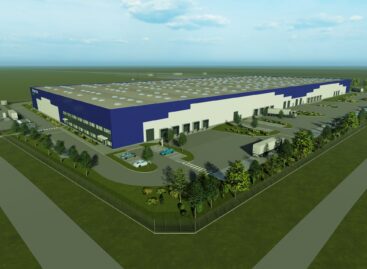Increasing dominance of mineral water among alcohol-free beverages
The consumption of healthy, alcohol-free beverages has been rising during the past decade and is now at the level of the European average. Consumption of alcohol-free beverages has doubled in ten years, reaching 195 litres per year in 2006 and expected to be around 215 litres in 2007. According to Mrs. Kiss, secretary of the Hungarian Association of Manufacturers of Soft Drinks, Fruit Juice and Mineral Water, carbonated soft drinks still accounted for 40 per cent of all sales in this segment three years ago. In 2005, mineral water took over first position, becoming the most popular alcohol-free beverage, achieving a market share of 44 per cent in 2006. This is expected to be 48 per cent in 2007. As a result of the very hot summer, the consumption of mineral water is expected to reach 100 litres in 2007, while less substantial growth is expected from soft drinks and fruit juice, sales of which are less dependent on the weather.The average rate of price rise for alcohol-free beverages has been 6-8 per cent in 2007. More significant price increase took place among fruit juices which have been effected by a steep rise in the price of fruits. Practically the total quantity of 650-700 million litres of carbonated soft drinks produced annually is sold in the domestic market, resulting in high consumption by European standards. Cola remains the most popular flavour with a market share still above 55 per cent. As a result of increasing health-consciousness, the popularity of low calorie “light” products is growing. Consumption of sports drinks rich in vitamins or protein is also on the increase. The market of soft drinks is highly concentrated with. Coca-Cola and Pepsi holding a combined market share of almost 70 per cent. Hungarian fruit juice production capacity is 650 million litres per year, which is not utilised fully. Total production is expected to be 570 million litres in 2007. 80 per cent of this is sold in the domestic market, while 20 per cent is exported. Import has been growing in recent years and is expected to account for more than 15 per cent of consumption this year. Fruit juices include 100 per cent fruit content products, nectars, low fruit content drinks and tea drinks as well. The slow growth of consumption seen in recent years is limited primarily to cheaper products. The growing assortment of ice teas plays a major role in this increase. While per capita consumption was only 4.7 litres in 2003, it is expected to be over 10 litres this year. Products in conventional paper packaging continue to hold the largest market share. The use of plastic bottles is on the increase, with a market share of 45 per cent at the moment. The production of fruit juices is not concentrated to the extent seen among carbonated soft drinks. At present five big manufacturers (Sió-Eckes Kft, Rauch Hungária Kft, Coca-Cola Beverages Magyarország Kft, Maspex-Olympos Kft, Elma ZRt.) control 80 per cent of the market.
Related news
Related news
How do young adults celebrate?
🎧 Hallgasd a cikket: Lejátszás Szünet Folytatás Leállítás Nyelv: Auto…
Read more >K&H: more and more middle-aged people live in their own apartments
🎧 Hallgasd a cikket: Lejátszás Szünet Folytatás Leállítás Nyelv: Auto…
Read more >Fiege has signed a contract for another 33 thousand square meters in Panattoni Park Moson
🎧 Hallgasd a cikket: Lejátszás Szünet Folytatás Leállítás Nyelv: Auto…
Read more >



